Jan Beaney and Jean Littlejohn bonded through their love of embroidery and some entrepreneurial dash. They’ve taught and exhibited internationally, and their company Double Trouble, set up to encourage, support and skill up textile artists, has been going strong for more than twenty years.
Jan and Jean know what they’re about and they’re keen to share what they’ve learned. In this inspiring Q&A, we’ll talk creative evolution, processes and techniques. And, of course, some top tips to help you on your own creative journey.
Ready to learn? Let’s go.
The appeal of tactility
TextileArtist.org: What got you into textile art?
Jan: I hated sewing at school so I was unexpectedly enlightened about the potential of textile art in my final year at Hornsey College of Art. Eirian Short was the tutor and I became excited about the ability to make marks using textiles.
Jean: Qualities of surface, tactility and the endless palette of materials available for expression of ideas.
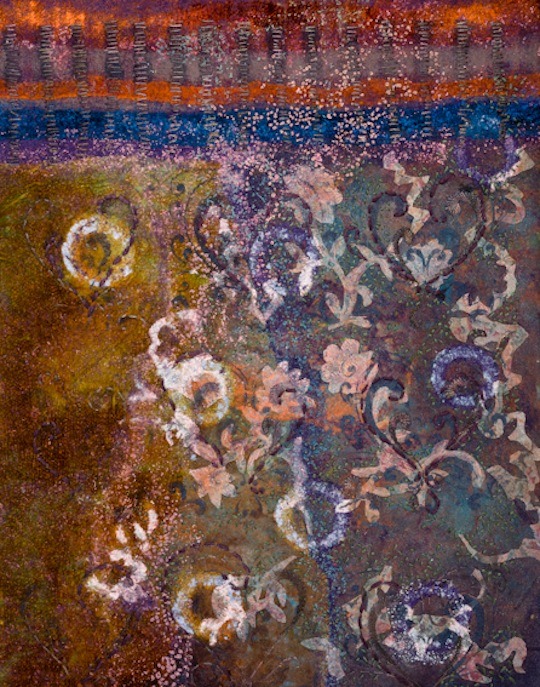
Early influences?
Jan: Besides Eirian, my uncle Russell Brockbank, a cartoonist and former art editor of Punch encouraged me to go to art college (my school was not impressed).
Jean: A genuine interest in all art forms and especially ancient art, where the energy of invention is evident. I was brought up in a household where making was part of life, and resourcefulness was encouraged. I enjoy a challenge.
What was your route to becoming an artist?
Jan: I started at Southampton College of Art and discovered the joys of lithography. Then I was off to West Sussex College of Art to study painting with lithography and then to Hornsey for my teaching qualification.
Jean: I trained as a teacher specialising in art.
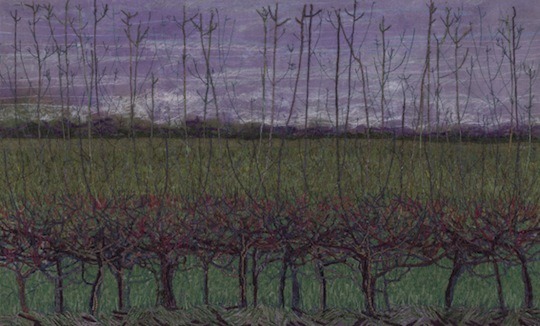
Integrity means not needing to fit in
Tell us about your medium and the techniques you use
Jan: It really depends on my initial ideas and the surface I wish to create; any mixed media that’s appropriate. So we’re looking at fabrics and threads but also paints, dyes, beads and wire.
Jean: Yes, it varies depending on my inspiration, but typically I work in layers of applique with print and stitch. I’m partial to a needle punch machine, too!
How would you describe your work and where does it fit within contemporary art?
Jan: My work tends to be based on landscape. I try to capture a memory or the essence of a time and place – exaggerating some elements and simplifying others. I’m not sure where my work fits in the sphere of contemporary art but I hope that my integrity is respected.
Jean: I would describe my work as stitched mixed media. There seems to be a refreshing change in the sphere of contemporary art where many styles are recognized and so there’s no pressure to reflect fashion.
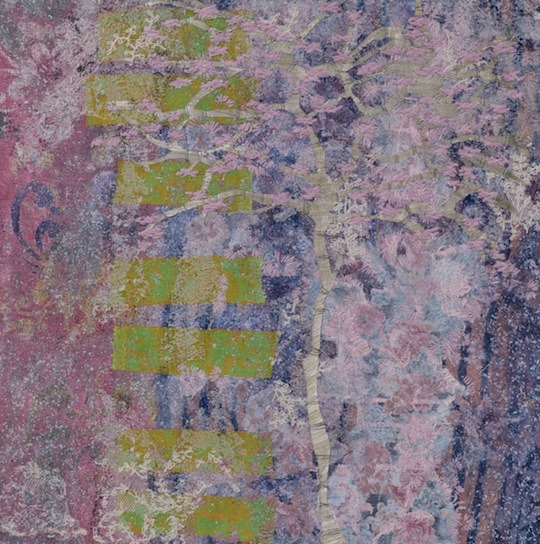
In praise of sketchbooks
Tell us a bit about your process and your favourite work environment
Jan: A sketchbook is the essential start to any work. I’ll make a rough painting to scale in order to sort the composition before starting the work. Then I’ll build up the surface with dye, print and fabrics before hand stitching and machine work. Working with soluble film means I have to place fabrics and threads before machining.
I concentrate best in my studio with little distraction.
Jean: I like to work in my studio, too. New phases of work take time to develop and they usually involve some form of observational drawings which I develop, often combining various printing methods, into a range of designs from which the final ideas emerge. The resulting images are a synthesis of observation and historical references.
I’d be lost without sketchbooks which I use to record observations and develop ideas. Nothing happens without visual research.
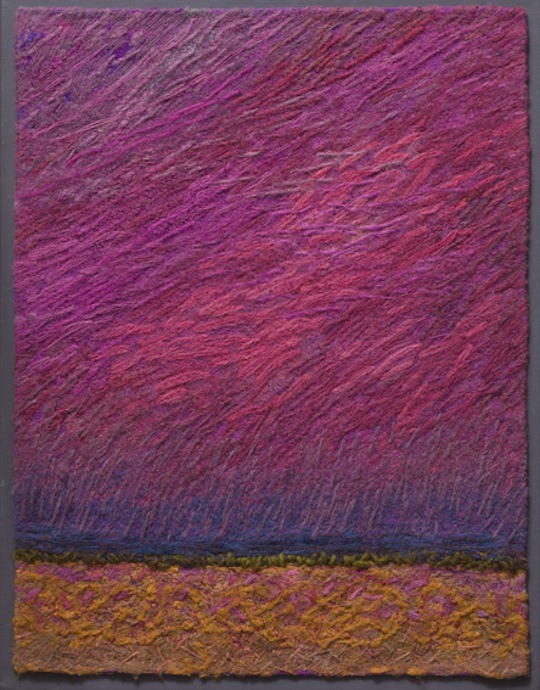
What inspires you and which other artists do you admire?
Jan: Unusual, unexpected or humble aspects within landscape that are often overlooked always appeal to me. Light qualities and tonal variations continually intrigue me.
I admire many textile artists but painters such as Kurt Jackson or David Hockney tend to offer a wider scope.
Jean: I admire Hockney, too, but it’s ancient artefacts that move me the most.
Tell us about a piece of work that’s been especially resonant
Jan: The sense of history, colour and tonal qualities of the Australian series bring back many great memories.
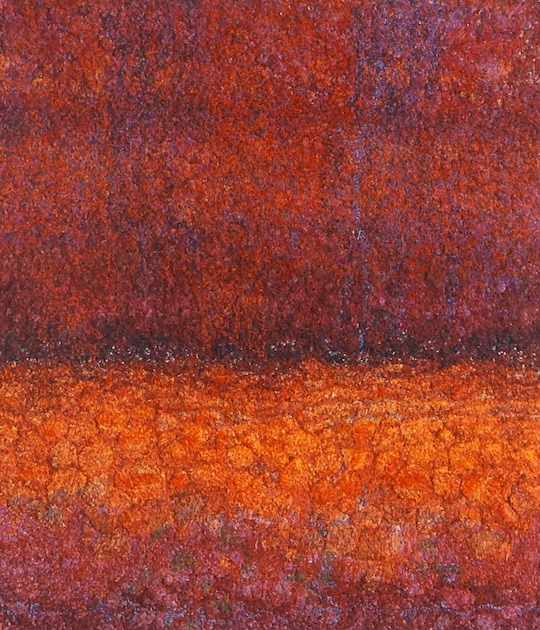
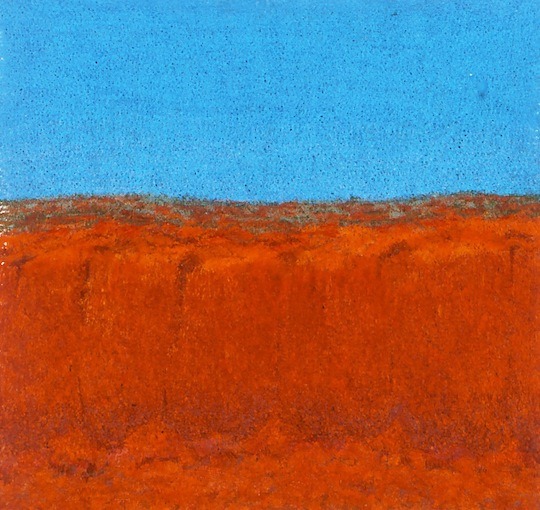
Jean: ‘Bayeaux Cathedral’. At the time I wanted to capture a dreamlike, sensitive atmospheric feel and, in a way, my new work refers back to this, but with different techniques and materials as well as more personal content.
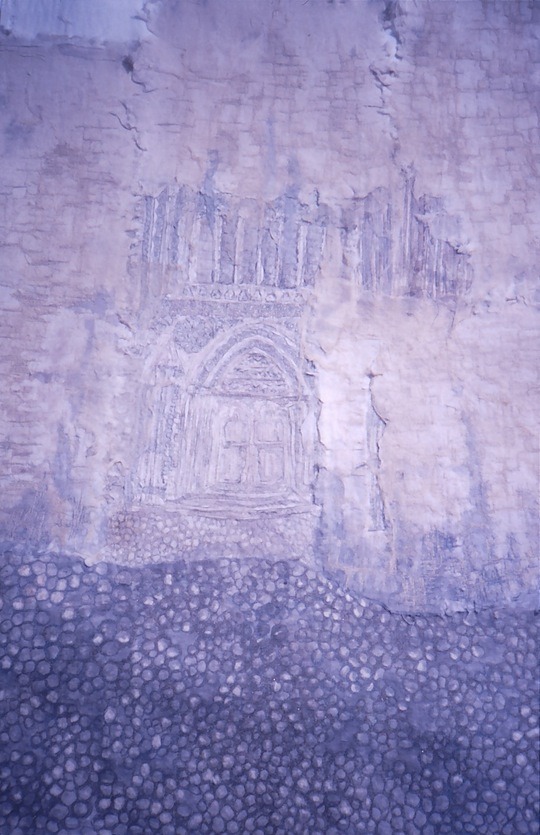
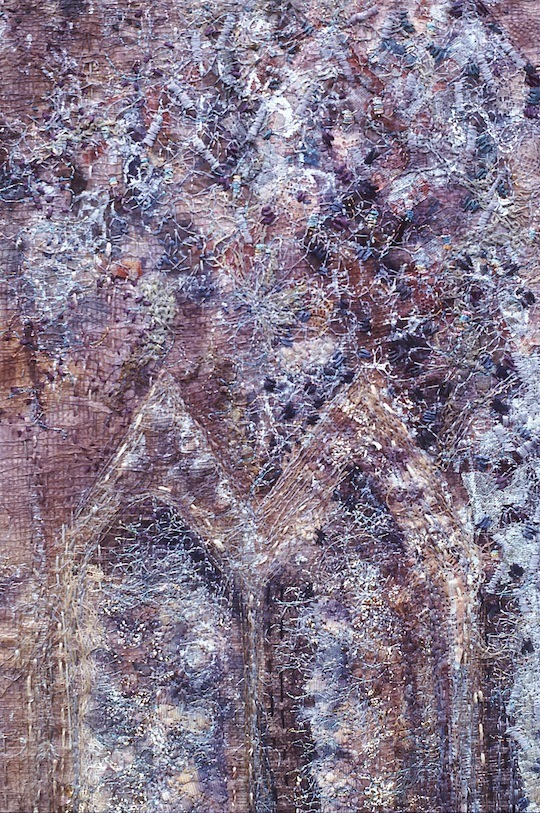
The more you look…
How has your work developed and how do you see it evolving?
Jan: I have a wider range of techniques to choose from and in particular I’ll continue to develop soluble film. My mantra is ‘the more you look the more you see’.
Jean: I’m always seeking fluency and freedom. It takes me time to work through tighter early stages until I can develop a more fluid feel to the imagery. I hope to continue to develop a more spontaneous feel to my work.
What advice would you give to aspiring textile artists?
Jan: Follow your feelings. Be aware of what’s going on around you in the art world but don’t try to follow trends unless you’re genuinely interested. Personal integrity is important and always inform your work by observation or writings.
Jean: It’s not always easy to earn a living and find time for your practice, but it’s important to keep your practice consistent. We have seen many artists fall by the wayside because they took breaks and found it difficult to get back in.
Continue to evolve a personal style and present that focus when applying to galleries.
Don’t forget to join an existing group, as there’ll be an established exhibiting programme to work towards. Or take the initiative to create a group of like-minded artists and approach galleries that way. Galleries expect a professional portfolio from you but, most importantly, they’ll look at the quality and freshness of your work.
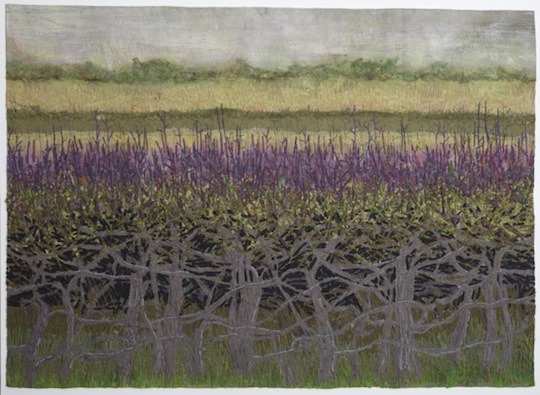
Tell us about Double Trouble
Jan: After writing books for other publishers I felt it was time to self publish. It was natural that Jean and I would start it together. Double Trouble was formed in 1997 to produce books to inspire and to promote stitched textiles. We’ve developed a wide catalogue of books and DVDs but the goal is still the same.
Jean: It started with two books and just grew from there. It was important that we had full editorial and aesthetic control and only published on themes and techniques that we had developed from our extensive teaching experience. We found it very energizing and it often influenced our work.
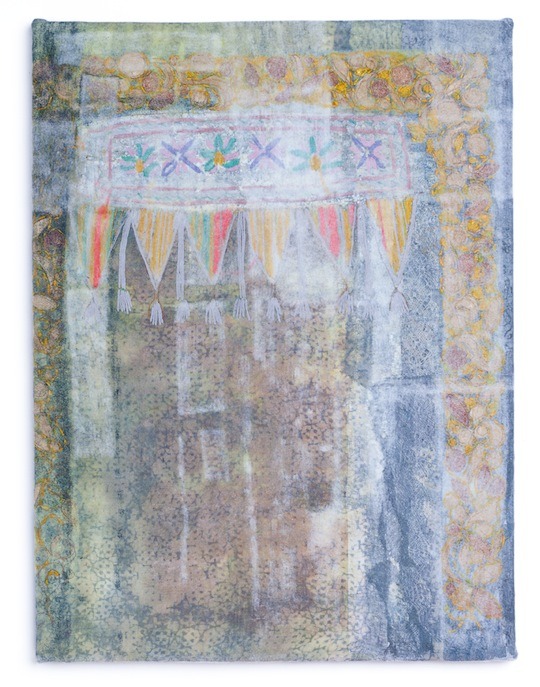
Any book recommendations for us?
Jan: Hunt down books that show the drawing and mark making of painters – these can be really informative.
Jean: This is a very personal thing but the books I would recommend are not textile books but rather those that inspire ideas or thinking processes.
- Matisse, His Art and His Textiles: The Fabric of Dreams – Royal Academy of Art
- The Creative Habit – Twyla Tharp
- The Tomb of the Unknown Craftsman – Grayson Perry – The British Museum Press
- Brewer’s Dictionary of Phrase & Fable or a good dictionary of quotations
Where can we find out more about your workshops and books?
Jan: On our website doubletrouble-ent.com.
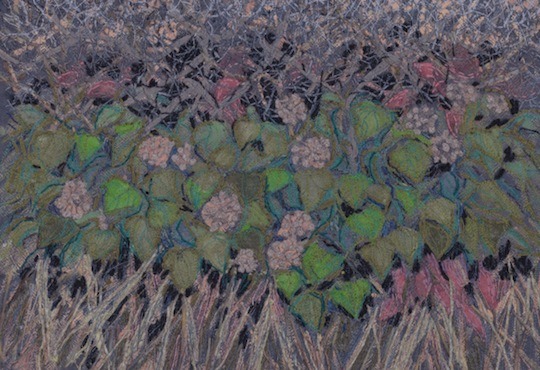
How do you choose where to show your work?
Jan: Exhibiting with the 62 group has offered many outlets for exhibiting; same with the Knitting & Stitching shows.
Jean: Being part of the 62 Group is a strong incentive to keep developing ideas.
Find out more about Jan and Jean’s books Stitchscapes and Stitch Rhythms and Patterns
If you’ve enjoyed this interview why not share it with your friends on Facebook using the button below or leave a comment – we’d love to hear from you.

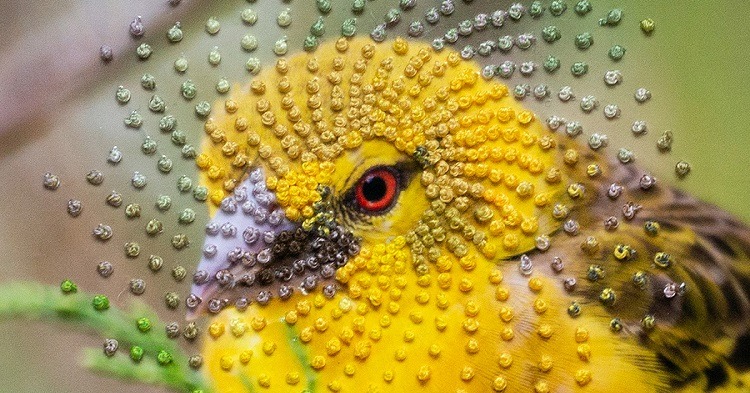
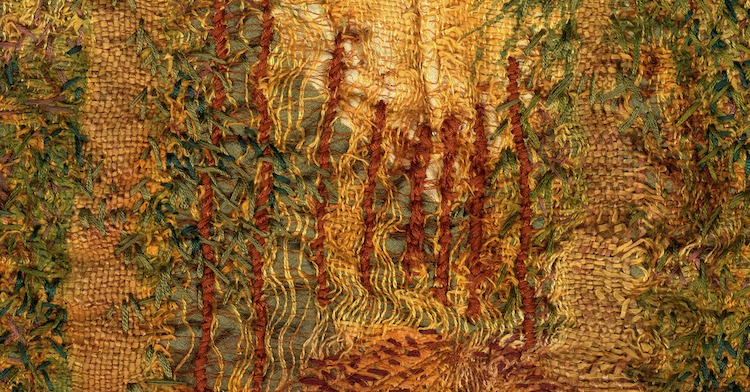
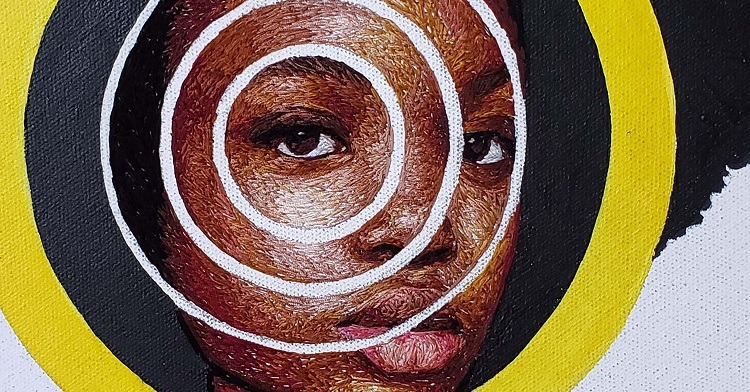
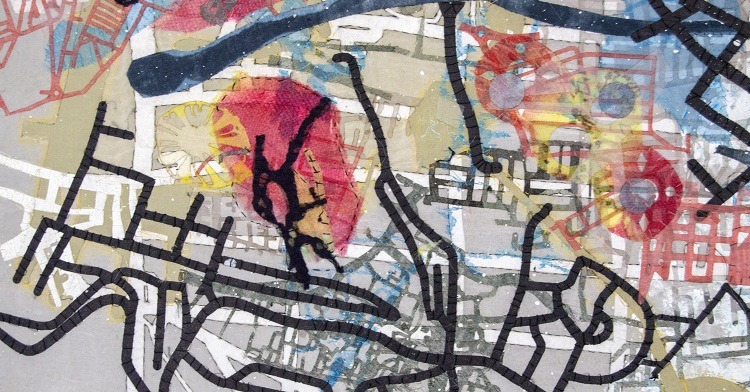
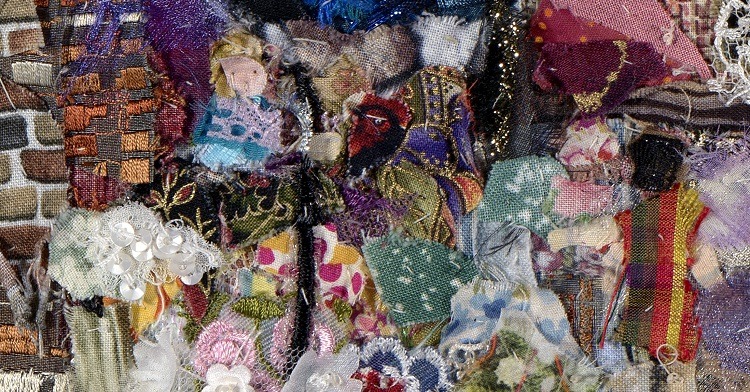
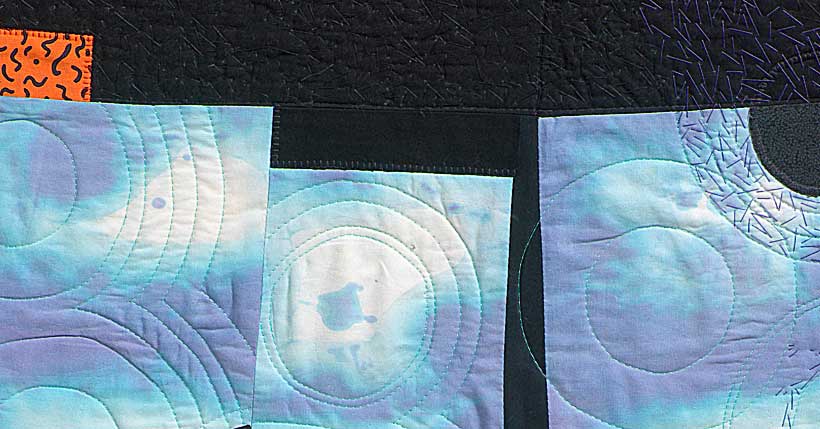
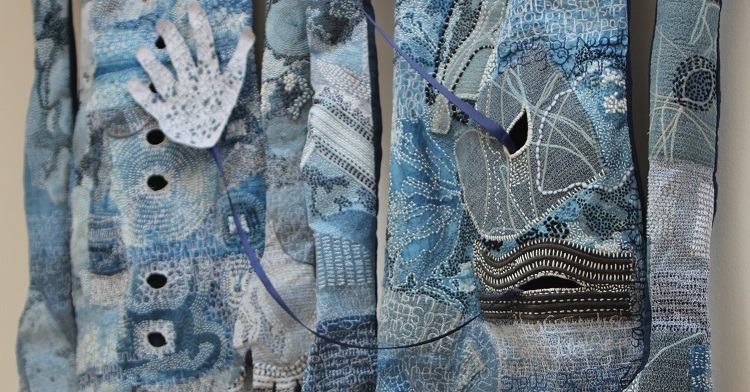
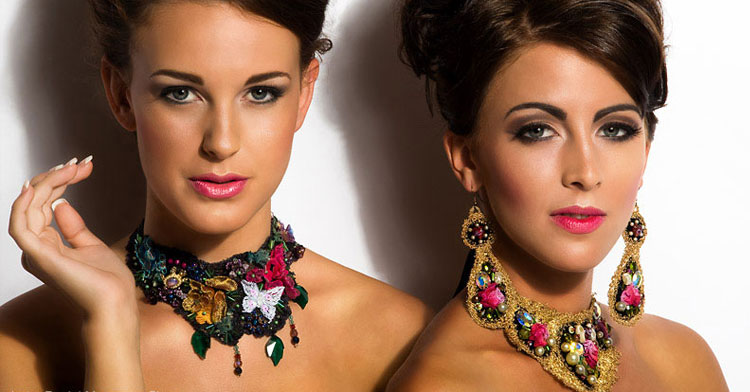
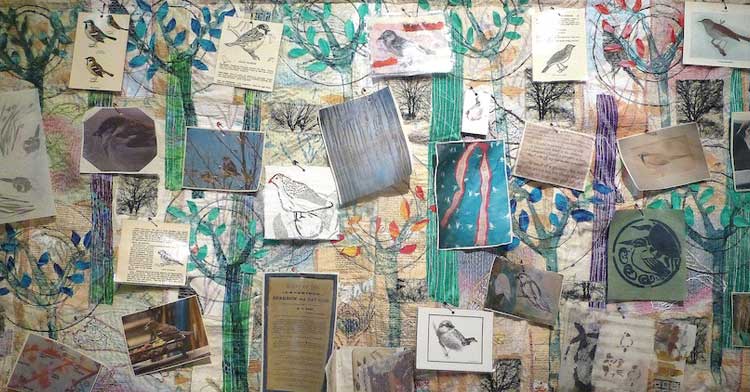
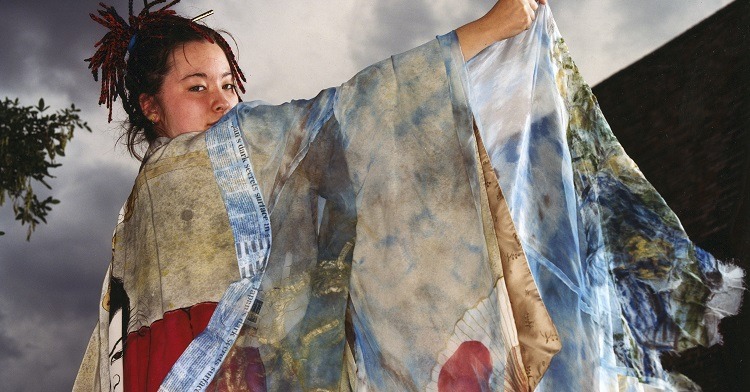
Comments